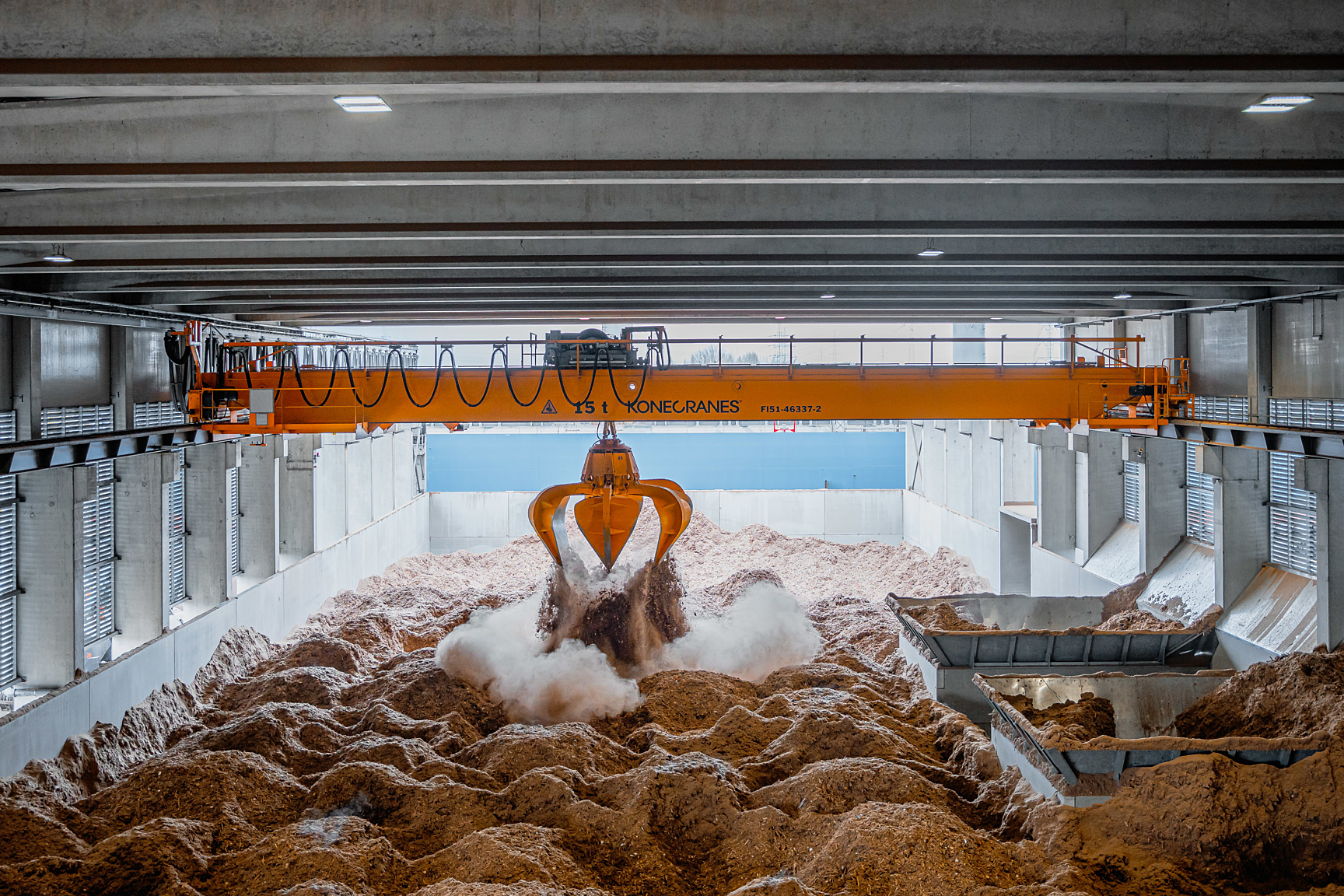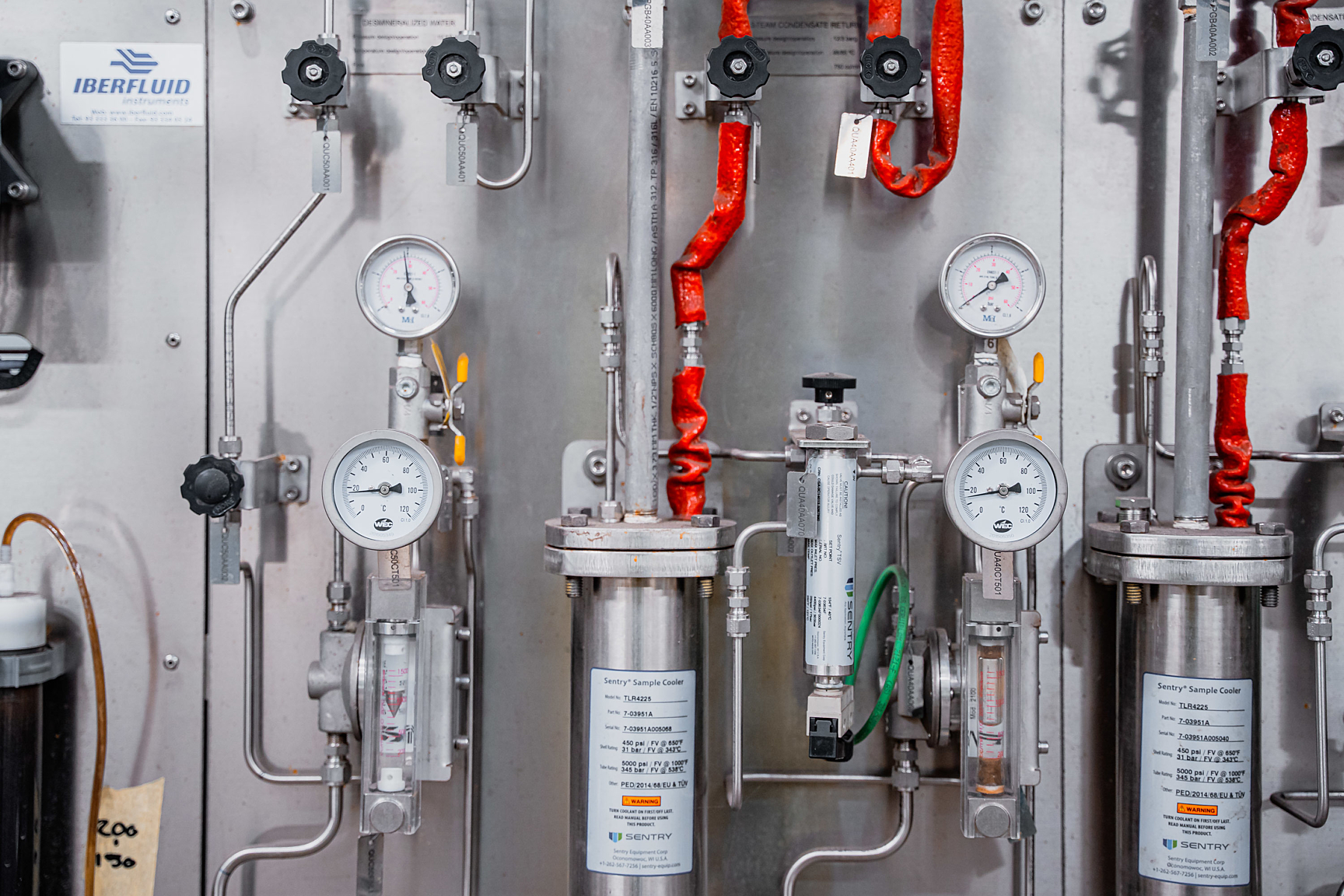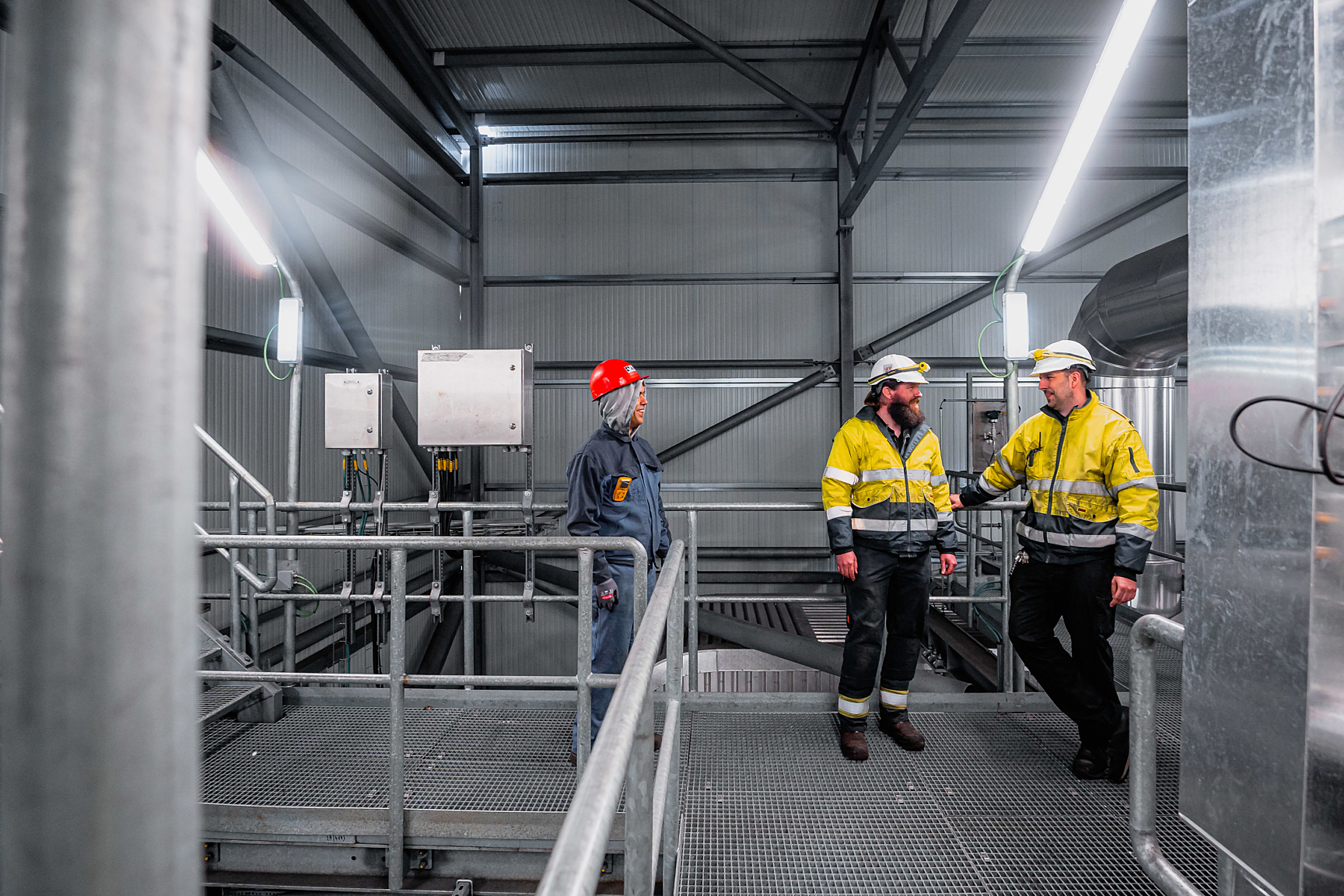
Cornerstone of a new sustainable ecosystem

5 juillet 2022
Bio Energy Base, the new power plant of Belgian Eco Energy, is up and running. It will provide existing companies in North Sea Port with sustainable energy, steam, and heat, but also aims at attracting new innovative investments by third parties and creating a hub for bio-based and CO2-neutral or CO2-negative industries. It all reinforces North Sea Port’s role as a green energy port and platform for the transition to a circular and climate-neutral economy.
Operations at Bio Energy Base (BEB) started earlier this year, but the official start was celebrated in May. At a time when Europe struggles with its dependency on fossile fuels and high energy prices, and is looking at ways to accelerate its decarbonisation and climate transition, the event did not go unnoticed, even more so because of the philosophy and business model that comes with the new facility. “We turn non-reusable wood waste into green, CO2-neutral electricity and steam in a power plant that respects the highest emission and noise standards, is the cornerstone of a new sustainable ecosystem, and will help kickstart new innovative industrial projects in its immediate vicinity”, Michael Corten, CEO and founder of Belgian Eco Energy, explains.

Greening existing industries...
The steam Bio Energy Base produces is being delivered to the neighbouring chemical plant, tank storage terminal and blending facility of Gadot Group, which sits just next to Ghent Coal Terminal alongside the sea canal to Terneuzen. A new direct underground pipeline bridges the distance of 900m between the two installations. By using BEB’s steam, Gadot will be able to avoid having to use fossil energy to generate the steam it needs.
“This helps to lock in existing industries. We provide them with a green alternative that strengthens their competitivity and ensures their continuity by making them less dependent on traditional energies and drastically reducing their CO2 output”, Mr Corten underlines.
The same can be said for the site BEB is sitting on. It is a quite uncommon sight to see a green power plant – a pretty clean installation – towering out above the black heaps of the Ghent Coal Terminal of stevedoring group Sea-Invest. But even this makes perfect sense, says Mr Corten. “Bio Energy Base did not take up greenfield space but redeveloped part of an existing coal terminal, which offers a strategic location along a major waterway, and turns it into a hub for green energy. This allows Sea-Invest to make a gradual switch with this installation, while continuing to play its traditional role of bulk handler. Both Sea- Invest and the port stand to gain from the fact that this major terminal gets a second life that remains linked to the waterway.”

... and attracting new ones
But the ambition of BEE reaches further. “Gadot is only the first company in our new cluster. We will also attract new innovative businesses importing additional jobs and added value around our power plant.”
Innovafeed, a French biotech company that produces bioproteins for animal and plant nutrition from insect breeding, will be the first newcomer. The company already has two plants in France and just announced it will build the world’s largest insect protein farm in the United States. It has plans for more installations. The biggest of them will be built in Ghent. It will be the first one of its kind in Flanders and even Belgium. The presence of BEB as a reliable source of renewable energy and the location in a port with the logistical advantages this offers for export were major factors in making this choice.
“We are very close to putting our signature under the final agreement. The new factory will cover six hectares and will be located right next to our own plant. Since Gadot absorbs all the steam generated by our first plant, we will then have to build a second one that will probably run on a different kind of industrial waste.” The Innovafeed case shows the leverage the power plant can offer, says Mr Corten.
“We want to be a catalyst in the development of a local ecosystem for innovation, sustainability, and circularity, the final objective being to become CO2-negative and to decouple economic growth and job creation from emissions. Together with North Sea Port, other port companies, and the Ghent University, we are also involved in the Carbon Capture and Utilisation (CCU) research project called North CCU Hub. And we are looking into specific applications for the reuse of our residual ashes in new building materials like paving stones too. When we reach our cruising speed with our two power plants, we estimate we will avoid about 280,000t of CO2 emissions each year, the equivalent of half the gas consumption of the population of Ghent.”
Short inbound supply chain
The idea of building short supply chains also applies to the input the new plant needs, reducing the carbon footprint that comes with transportation. The non-recyclable wood waste is collected from within Belgium and the Netherlands. It never travels more than 250 kilometres and will mainly be delivered by inland shipping. Mr Corten puts the share of the waterway in the incoming volumes at about 75%. Only flows from smaller and nearby sites will come by truck.
Two inland barges will bring in some 1,200t of wood wasteeach on a weekly basis. They will be handled directly at the quay of Ghent Coal Terminal. The quayside is connected by dedicated conveyor belts to the large storage hall which can hold about 3,000t of the wood waste, enough to keep the plant running for another week.
The plant will need 150,000t of (certified) non-reusable wood waste on a yearly base. BEE has signed a deal with recycling group Renewi to guarantee the needed supply. “Availability of the material we need is no longer an issue.” Barging will be performed by operators Antverpia and NPRC.

A model for duplication
At this stage, BEE has projects similar to the one in Ghent on the drawing table in Belgium (at Lixhe, near Liège), France, and Spain. In most cases, steam and heat are the decisive linchpin. “Steam and heat are technically and commercially a very specialised affair, where you need to find the right kind of customer. Excess green electricity can always be put back on the grid for delivery to other customers everywhere in Flanders, for instance. You cannot do that with steam.”
Bio Energy Base offers a model that can be rolled out on other locations and that, according to BEE, can inspire a new type of decentralised and future-proof energy infrastructure. “This is a big difference with the project we first tried to implement in Ghent a few years ago, which was much bigger in terms of size, investment, and traffic volume, but which did not come true. Our new power plant provides a blueprint for a renewable energy production network linked to industrial clusters striving for zero or negative carbon emission and a minimal overall footprint, and boosting growth, innovation, and employment.”
Convaincus et prêts à travailler ensemble ?
BEE possède toute l'expertise technique et financière nécessaire, avec un historique prouvé dans les sources d'énergie renouvelables telles que la chaleur, le soleil, l'éolien et le bio. Nous serons heureux de discuter ensemble des possibilités de votre projet !

